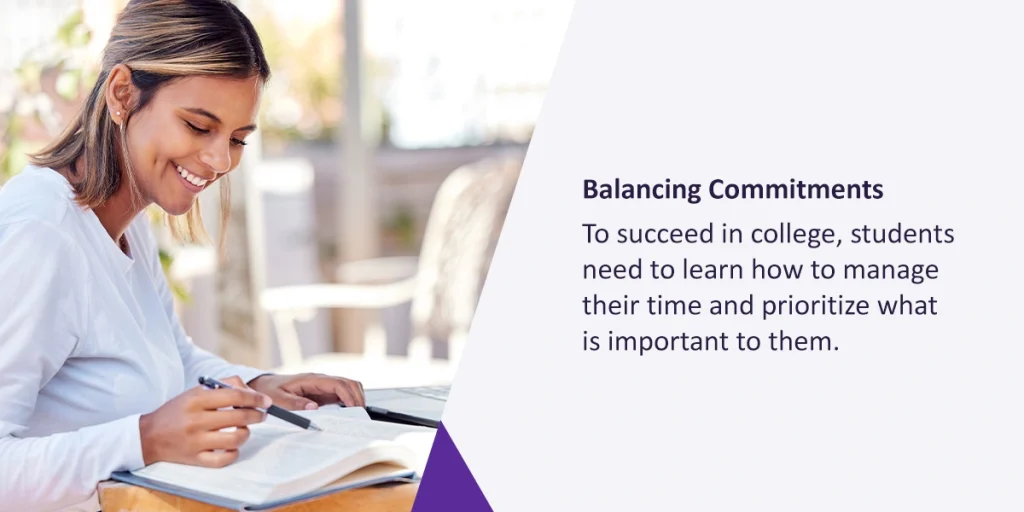



Many college students begin their journey in higher education with high hopes for improving their lives. However, unexpected difficulties can make obtaining a degree challenging, and some students drop out of their program entirely. Addressing the challenges of student retention is one of the best ways for your community college or other higher education institution to achieve greater student success.
Fortunately, higher education institutions can fight the challenges of student retention in higher education. Learn about the most significant challenges and some strategies your institution can take to mitigate these risk factors for your students.

In the fall semester of 2020, America’s overall college retention rate fell by its largest percentage since reporting began. This decline in retention places the spotlight on higher education institutions as they reevaluate their methods. Lower retention rates continued into the 2021-22 school year, even dropping slightly since 2020.
What affects student retention? Several student retention factors, like financial responsibilities and academic issues, are common to nearly all students. Community colleges face a heightened risk of college attrition because their students encounter outside pressures like families and full-time jobs.
Consider the top five challenges of student retention in higher education to develop solutions that will take your students and institution far.
Financial responsibility is one of the top three challenges college students face. A college education requires a significant investment. Recent estimates suggest that college students, on average, pay $14,700 for attendance at public universities. Those who stay on campus will pay more — about $26,000 on average.
Many students must take out student loans to pay for their higher education, and many must consider how to support their families during their enrollment. Students’ ability to afford tuition, textbooks, and other educational expenses like technology or transportation can impact an institution’s retention rate. Financial aid offers from about 50% of universities don’t include such costs, making it difficult for students to budget. Students also have to consider the future cost of debt.
These considerations make the financial burden of higher education one of the most common challenges for students. Many students question whether their education will let them recoup their immediate and future costs after graduation. After a few years in their program, they leave higher education to lessen their future financial burden.
Academic preparedness is another of the top challenges of student retention. College courses can be rigorous and demanding. After a few weeks of classes, some students realize their earlier education did not prepare them for the new curriculum. Others have a gap in their education, leaving them without the necessary foundation for further studies.
Some students also face factors like disabilities, which make it challenging to meet the rigors of a higher education curriculum. About 13% of U.S. adults have a cognitive disability, making decision-making or concentration more difficult.
Educational institutions often offer some alternatives to aid students who face academic challenges. Taking remedial courses can bring students up to date on required information. Students may also utilize resources like tutoring or retake classes to improve grades or gain the necessary credits. However, retaking a course can be an additional cost, leading to student attrition. Students need to prepare to prevent this costly dilemma ahead of time.

As students focus on achieving success in school and their future careers, they also handle responsibilities in other areas. Adult students and those studying at community colleges often have full-time jobs, children, families, or other obligations. Even traditional college students often participate in internships, student councils and societies, and extracurricular activities like intercollegiate athletics.
Students balance many demands on their time, mental space, and physical energy. College is often when students have more difficulty managing time, saying no, and focusing on priorities than ever before. When college activities get in the way of other commitments or students become overwhelmed by their workload, they often leave their education behind.
With so many stressors to manage, many students experience worry and anxiety during their experience in higher education. According to a recent survey, 47% of college students reported clinically significant depression and anxiety symptoms. Another 66% felt isolated from others regularly, a significant factor in developing negative mental health symptoms.
Mental health symptoms majorly impact school performance. Students struggle to keep up with schoolwork, which leads to dropping grades and forces them to leave a program. Some students may also leave school to free up time to focus on their mental health.
Increasing engagement and a sense of belonging can positively impact student mental health. Students may also need resources like counseling, coaching, and guidance in school success.
One of the little-discussed challenges of student retention is the success of student resources. Many institutions offer some level of student assistance, though the effectiveness of those programs varies. If students are unaware of the resources available or don’t use them, they are missing out on the help your institution can provide. Deeper issues may go unresolved, leading to attrition.
Students can significantly benefit from an institution’s resources if the administration implements those resources effectively. Writing centers, academic tutors, guidance counseling, career success conferences, and faculty who are accessible for answering questions all contribute to student success. These tools should be simple and effective for students to maximize their benefits.
Student assistance resources touch on many of the other issues impacting student retention. Schools may offer additional financial assistance to students in need through resources like grants. Those struggling academically can use tutors to aid their studies. A guidance counselor advises students about balancing commitments, and a mental health counselor can help students manage anxiety or depression.
The challenges of student retention in higher education require innovative solutions. Colleges and other higher education institutions should implement some strategies for driving change. Consider these approaches to reducing the challenges of student retention. With these proactive strategies and others, college and higher education administrators can fight college attrition and enhance their student experience to promote success.
Assisting your institution’s students with financial burdens and academic challenges starts with improving their educational experience. Instructors can prevent academic issues by using efficient teaching methods and being available to students who need help. Encourage these improvements through faculty evaluations, mid-course surveys, better office hours, and other tools to boost student engagement.
Supporting students’ mental health is an essential strategy for ensuring student success. Ensure your institution offers accessible and genuinely beneficial resources like counseling and academic guidance. Foster holistic well-being by promoting faculty engagement, campus programs, and other social resources. Finally, communicate the availability of these support systems by creating a resource guide for students and sharing it widely. Individual coaching can also give students the support they need.
Identifying at-risk students requires careful attention to student behavior, which may be more challenging for larger institutions. However, proactive intervention can significantly change the story for a potential dropout. Administrators need knowledge of a student’s struggles to intervene effectively. When students go off their educational course, counselors can step in to discover the issue and develop a solution.
Early intervention allows institutions to proactively identify struggling students and begin reaching out to offer assistance. This strategy plays an essential role in retaining students.
Students often miss out on financial resources because they don’t know such aids exist. Institutions that actively educate students about financial topics can improve retention by giving students the resources to afford their programs. Financial aid counseling teaches students about available aid so they can apply for and receive it. Counselors can also remind students about application deadlines to ensure those who need assistance apply on time.
One way to work around the busy schedules many students have is by offering more flexible learning options. Many institutions see benefits in online or hybrid learning. These options allow students to attend classes electronically or switch between in-person and online learning as necessary. Students facing responsibilities like work and childcare can learn wherever and whenever works for their schedules.
Data collection and analysis are valuable tools for implementing student retention strategies. Statistics only tell one part of a student’s story, but they are an excellent starting point for understanding the needs of students. Predictive analytics are crucial for analyzing student trajectories and optimizing the chance of program and degree completion. Data solutions can monitor student performance and sort students into medium and high-risk categories. This insight enables counselors to make informed decisions for advancing student success.
In institutions facing retention struggles, adopting a particular strategy for improving retention leads to better outcomes. Here’s a process to follow for better student retention.
When educational institutions identify retention challenges and make thoughtful changes, they will see improvements in student success.
Identifying and alleviating some of the factors of student attrition is essential if institutions want to help students succeed. To help, Watermark created a student success solution powered by artificial intelligence (AI) and designed to help institutions increase retention rates.
The Student Success & Engagement platform tracks student progress and generates custom reports to provide deeper insight into student success. The software also identifies interventions so counselors can collaborate with students to provide the necessary resources.
Our more than 20 years of experience at Watermark enable us to provide higher education institutions with powerful tools for driving institutional advancement. Request a demo today to learn more about what our software can help you accomplish.































































































































































































































































































































































































Submit this form to schedule a meeting with one of our reps to learn more about our solutions. If you need customer support instead, click here.